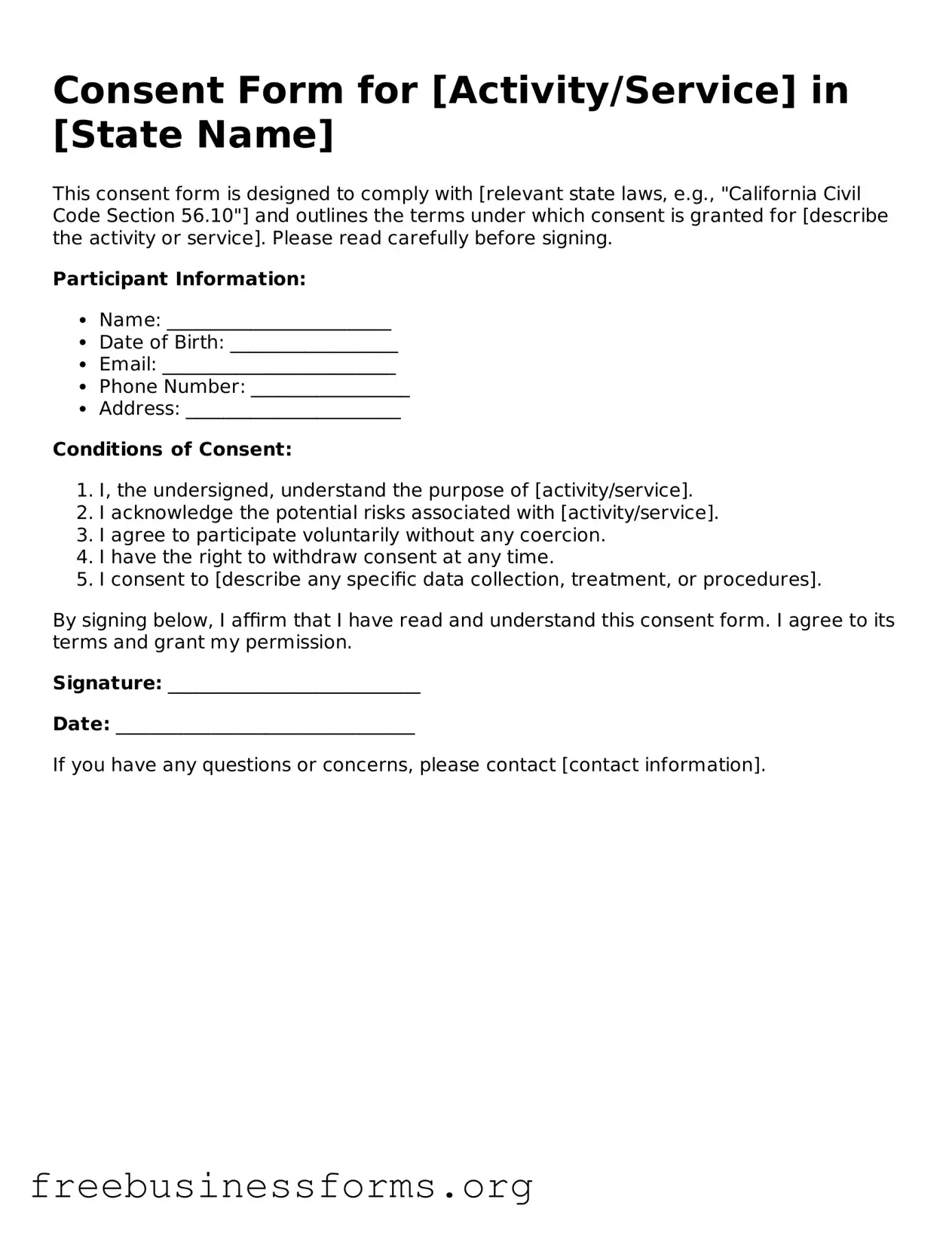Consent Form for [Activity/Service] in [State Name]
This consent form is designed to comply with [relevant state laws, e.g., "California Civil Code Section 56.10"] and outlines the terms under which consent is granted for [describe the activity or service]. Please read carefully before signing.
Participant Information:
- Name: ________________________
- Date of Birth: __________________
- Email: _________________________
- Phone Number: _________________
- Address: _______________________
Conditions of Consent:
- I, the undersigned, understand the purpose of [activity/service].
- I acknowledge the potential risks associated with [activity/service].
- I agree to participate voluntarily without any coercion.
- I have the right to withdraw consent at any time.
- I consent to [describe any specific data collection, treatment, or procedures].
By signing below, I affirm that I have read and understand this consent form. I agree to its terms and grant my permission.
Signature: ___________________________
Date: ________________________________
If you have any questions or concerns, please contact [contact information].
